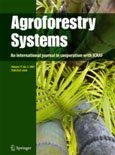This paper examined the potential of dry north western woodlands of Ethiopia (Adi Goshu, Lemlem Terara, and Gemed) for carbon stocks. Allometry equations were used to determine the aboveground, belowground, and dead woods biomasses; litter and herbaceous biomasses were determined using direct harvesting method. The result showed the estimated mean carbon stocks of the aboveground, belowground, and the dead wood biomass for the Untapped Boswellia Papyrifera Woodland (UW) in Lemlem Terara site were significantly higher (P < 0.05) than that of the Adi Goshu site. In the Gemed site, the mean Herb Biomass Carbon (HBC) stock was 1.2 Mg ha-1, which is significantly highest (P < 0.05) than the other two study sites (Lemlem Terara, 0.42 Mg ha-1 and Adi Goshu, 0.45 Mg ha-1) for the Tapped Boswellia Papyrifera Woodland (TW). In UW, the mean soil carbon stock of the Lemlem Terara site (58.19 Mg ha-1) was significantly (P < 0.05) higher than that of Adi Goshu (33.61 Mg ha-1). In the case of the total carbon stocks in UW stratum, for the Adi Goshu site, the carbon stock was estimated to be about 55.26 Mg ha-1 while 96.74 Mg ha-1 for Lemlem Terara. Therefore, Carbon stock in different carbon pools (aboveground and belowground biomass, dead wood, litter, herbaceous biomass, and soil) has a potential to decrease the rate of enrichment of atmospheric concentration of carbon dioxide.
DOI:
https://doi.org/10.1080/10549811.2019.1598874
Altmetric score:
Dimensions Citation Count:
























